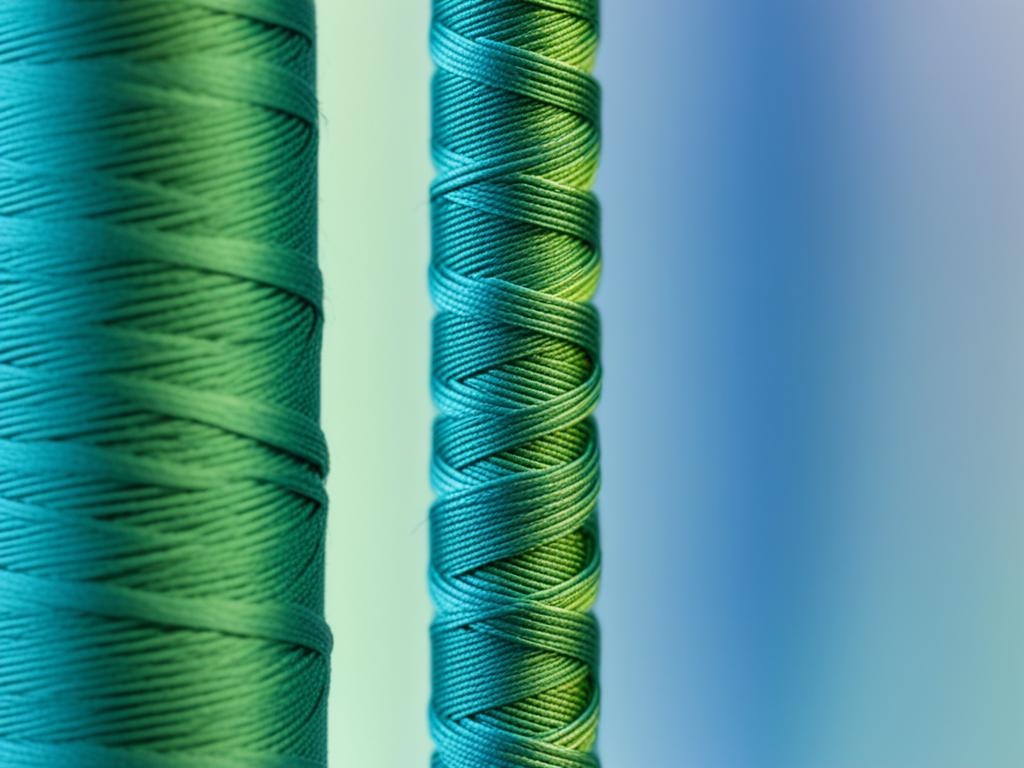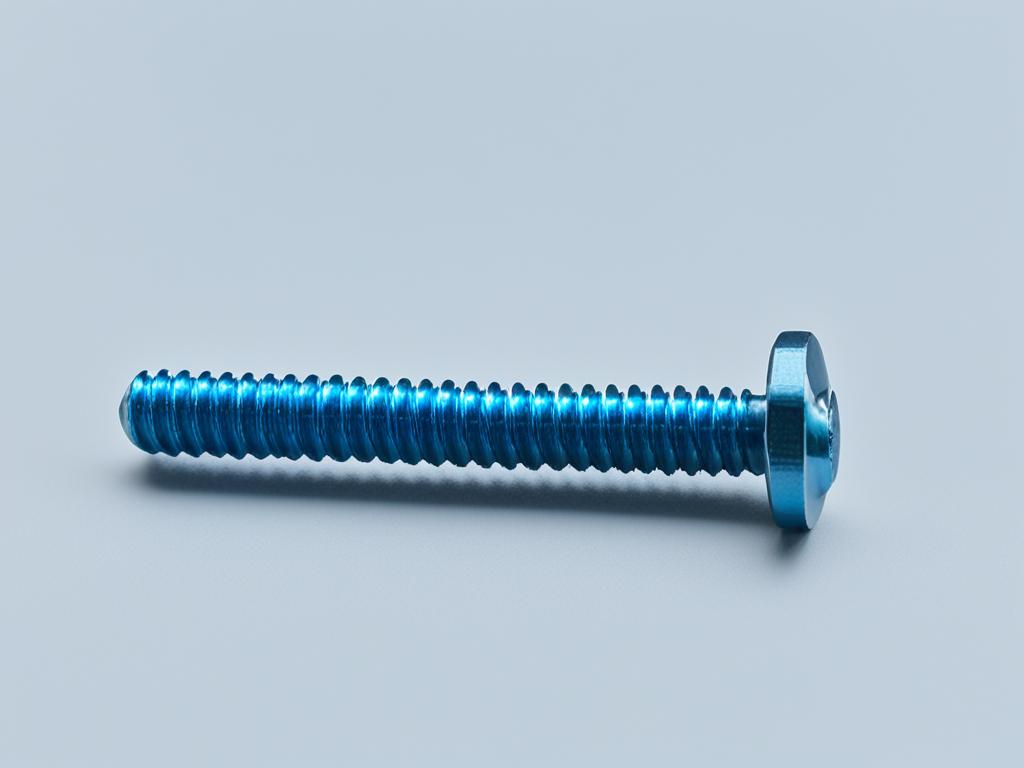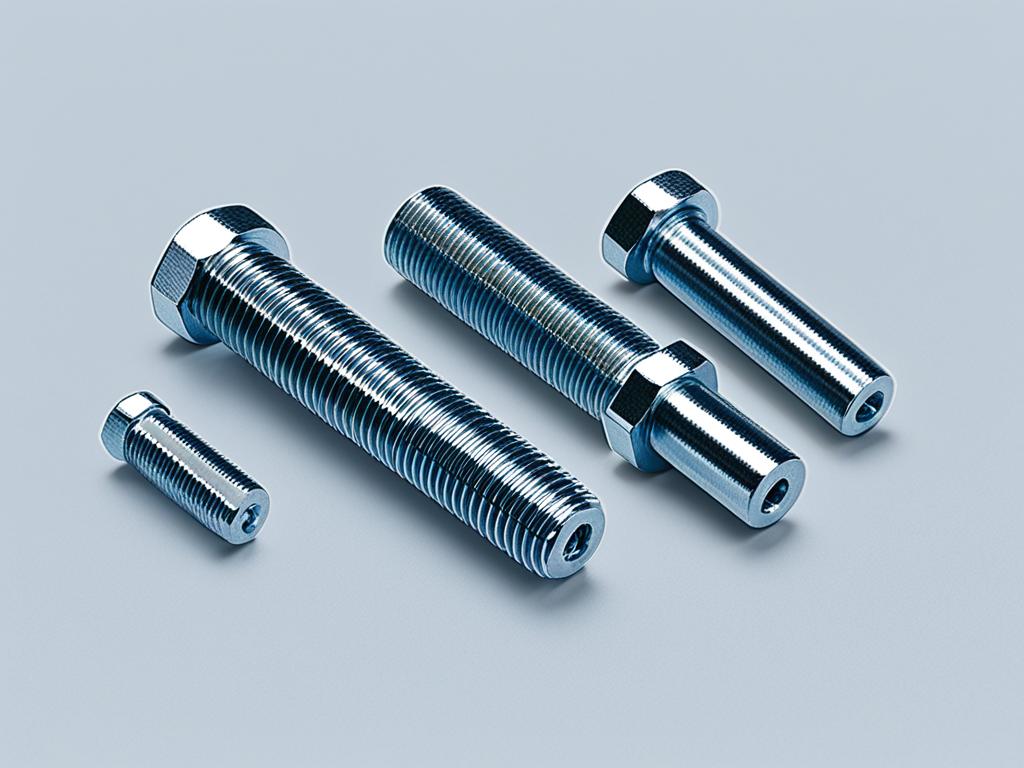When it comes to selecting the right threaded fastener for your project, the choice between M4 and 8-32 screws can be quite significant. These two commonly used fasteners have different sizes, thread specifications, and applications. Understanding the differences between them is crucial to ensuring a secure and efficient fit for your specific needs.
The M4 screw is classified as a metric fastener, while the 8-32 screw is an inch fastener. The M4 screw has an outside diameter (OD) of 4 mm, while the 8-32 screw has an OD of 0.164 inches. Additionally, the M4 screw has a thread pitch of 0.70 mm, while the 8-32 screw has a thread pitch of 32 threads per inch. Both screws come in various lengths to accommodate different applications.
Key Takeaways:
- Choosing between M4 and 8-32 screws depends on your specific project requirements.
- The M4 screw is metric-based, while the 8-32 screw is inch-based.
- Consider the thread size, pitch, and adherence to relevant standards when selecting the appropriate screw.
- M4 screws are commonly used in metric applications, while 8-32 screws are often used in inch-based systems.
- Consult with industry professionals and refer to specific guidelines or standards for an informed decision.
Understanding Thread Measurements and Standards
When it comes to comparing M4 and 8-32 screws, it’s important to understand the thread measurements and standards that differentiate them. In this section, we will explore the thread pitch, dimensions, and standards for both M4 and 8-32 screws to provide a comprehensive understanding of their differences.
M4 Screw Thread Size Details
The M4 screw, classified as a metric fastener, has an outer diameter (OD) of 4mm. The thread pitch for M4 screws is 0.70mm. This means that for every 0.70mm of axial distance, there is a complete rotation of the screw.
8-32 Screw Dimensions
Unlike M4 screws, 8-32 screws are inch fasteners with an outer diameter (OD) of 0.164 inches. The thread pitch for 8-32 screws is 32 threads per inch. This indicates that in every inch of axial distance, there are 32 complete rotations of the screw.
M4 and 8-32 Thread Pitch Difference
The primary difference between M4 and 8-32 screws lies in their thread pitch. The M4 screw has a finer thread pitch of 0.70mm, resulting in more threads per unit of length compared to the 8-32 screw’s thread pitch of 32 threads per inch. The finer thread pitch of M4 screws offers better precision and finer adjustment capabilities.
| M4 Screw | 8-32 Screw |
|---|---|
| Metric Fastener | Inch Fastener |
| OD: 4mm | OD: 0.164 inches |
| Thread Pitch: 0.70mm | Thread Pitch: 32 threads per inch |
| Regulated by DIN and ISO standards | Follows the UNC (Unified National Coarse) standard |
The table above summarizes the key differences between M4 and 8-32 screws, including their classification, outer diameter, thread pitch, and applicable standards.
Understanding these thread measurements and standards is crucial in selecting the right fastener for your specific application. Whether you require metric compatibility or need to adhere to inch-based systems, the information provided will help you make an informed decision.
Now that we have explored the thread measurements and standards, let’s move on to the next section to further explore how to choose the right fastener that suits your specific needs.

Choosing the Right Fastener for Your Needs
When it comes to selecting the perfect fastener for your project, it’s essential to consider your specific requirements. In the case of the M4 and 8-32 screws, understanding their differences is crucial in making an informed decision that guarantees a secure and efficient fastening solution.
M4 vs 8-32: The M4 screw is commonly used in metric applications, while the 8-32 screw finds its place in inch-based systems. If your project requires compatibility with metric specifications, the M4 screw is the optimal choice. Its precise metric dimensions ensure a proper fit and functionality.
On the other hand, if your project adheres to inch-based standards, the 8-32 screw is the more suitable option. Its inch-based dimensions and compatibility make it a reliable choice for a variety of applications in the inch-based system.
Accurate Measurement and Identification: To ensure the right fit, it’s essential to correctly measure and identify the thread sizes and pitches required for your application. The M4 screw has a specific thread size, while the 8-32 screw follows its own thread specification. By selecting the appropriate screw, you can guarantee a secure and reliable fastening solution.
Consider Material, Load-Bearing Capacity, and Environmental Conditions: When choosing the right fastener, it’s essential to consider factors beyond thread size and pitch. Evaluate the material of the components you are fastening, the expected load-bearing capacity, and the environmental conditions the fastener will be exposed to. These elements can influence the longevity and performance of the fastening solution.
Choose Wisely for Optimal Results
Making the right decision between the M4 and 8-32 screws hinges on your specific fastening needs. Whether it’s metric or inch-based, accurate measurement, and consideration of additional factors will help you select the appropriate fastener for your application.
Remember, if you need assistance in determining the optimal fastener or have any questions, consult with industry professionals who can provide expert guidance tailored to your specific requirements.
Now that we have explored the differences between the M4 and 8-32 screws and the factors to consider, let’s dive deeper into their respective thread measurements and standards in the next section.

Conclusion
In conclusion, when choosing between the M4 and 8-32 screws, it’s essential to consider the specific requirements of your project. These screws have distinct thread sizes, pitches, and standards that should be taken into account when selecting the appropriate fastener. The M4 screw is metric-based, while the 8-32 screw is inch-based, so it’s crucial to understand the differences in thread measurements.
By understanding the dimensions and thread pitch differences between the M4 and 8-32 screws, you can ensure a proper fit and efficient fastening for your applications. It’s important to adhere to the relevant standards, such as the DIN, ISO, and UNC standards, to guarantee the screws meet the required specifications.
To make an informed decision, it’s always advisable to seek guidance from industry professionals and refer to specific guidelines or standards. Consulting experts can help you assess your project’s needs accurately and determine the most suitable screw for your specific application. This approach will ensure effective and reliable fastening.
FAQ
What is the difference between M4 and 8-32 screws?
What thread standards do the M4 and 8-32 screws follow?
Which screw should I choose for my project?
How do I ensure the proper fit of the screw in my application?
Source Links
- https://americanlongrifles.org/forum/index.php?topic=36217.0
- https://www.essentracomponents.com/en-us/news/solutions/fastening-components/what-is-the-difference-between-metric-and-standard-fasteners
- https://www.huyett.com/blog/nuts-and-bolts-sizes
